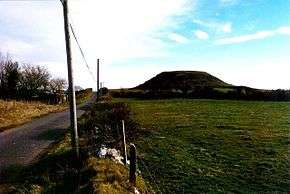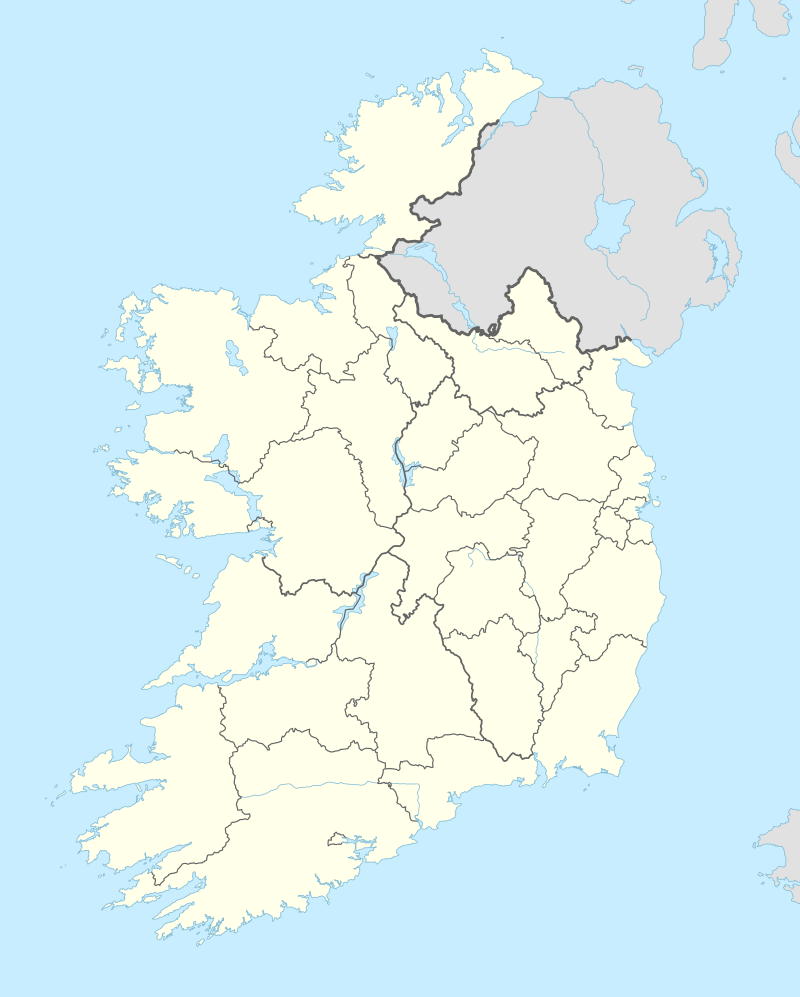Dunnamona
| Dún na Móna | |||||||||
 | |||||||||
 Shown within Ireland | |||||||||
| Location |
Dunnamona, Drumraney, County Westmeath, Ireland | ||||||||
|---|---|---|---|---|---|---|---|---|---|
| Region | Tethbae | ||||||||
| Coordinates | 53°29′58″N 7°47′01″W / 53.499548°N 7.783629°WCoordinates: 53°29′58″N 7°47′01″W / 53.499548°N 7.783629°W | ||||||||
| Type | motte | ||||||||
| Diameter | 36 m (118 ft) | ||||||||
| Height | 9 metres (30 ft) | ||||||||
| History | |||||||||
| Builder | Dillon family | ||||||||
| Material | earth | ||||||||
| Founded | 12th century | ||||||||
| Periods | Norman Ireland | ||||||||
| Cultures | Cambro-Norman, Old English | ||||||||
| Site notes | |||||||||
| Public access | yes | ||||||||
| Designation |
| ||||||||
Dunnamona is a motte-and-bailey and National Monument in County Westmeath, Ireland.[1]
Location
Dunnamona motte is located next to a tributary of the Owenacharra River, 4.7 km (2.9 mi) east of Tubberclare.[2]
History and archaeology
Motte-and-bailey castles were a primitive type of castle built by the Norman invasion, a mound of earth topped by a wooden palisade. This region, known as Tethbae, was allotted to the Dillon family, descendants of Sir Henry de Leon (c. 1176 – 1244). They built the motte at Dunnamona ("hillfort of peat") as well as another at Drumraney, later abandoning the mottes for permanent stone castles.[3]
References
This article is issued from Wikipedia - version of the 9/3/2016. The text is available under the Creative Commons Attribution/Share Alike but additional terms may apply for the media files.